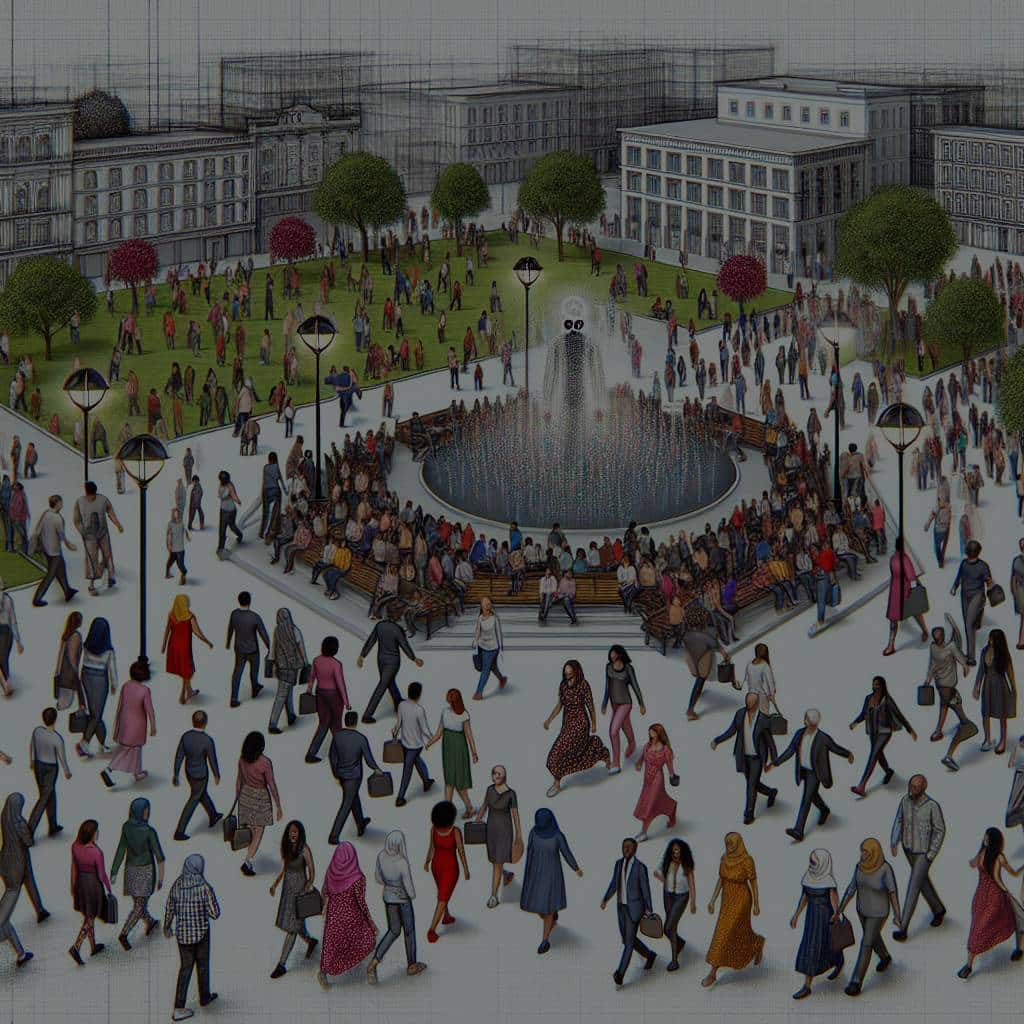How Is Computer Vision Contributing to Safer Public Space Crowd Management?

In an age where technology is rapidly evolving, it is crucial to understand how it is being leveraged to enhance safety and security in public spaces. One such technology, computer vision, is now playing a critical role in crowd management. This article will delve into how computer vision technology is being utilised, its real-time capabilities, and the potential it holds for the future.
Harnessing Computer Vision for Crowd Management
Computer vision is a field that involves enabling computers to see, identify, and process images in a similar way to human vision, and to provide appropriate output. It is a scientific discipline that explores how computers can be made to gain high-level understanding from images or videos. In the context of crowd management, computer vision technologies are being proposed as a means to enhance security.
Also to discover : Discover the hidden treasures inside your crystals mystery box
Crowd management involves the systematic planning for, and supervision of, the orderly movement and assembly of people. Traditional crowd management methods encompassed manual monitoring and subjective judgment, which were bound to human error and inefficiency. However, the advent of computer vision technology has revolutionised this process, offering a more accurate, efficient, and reliable means of monitoring and managing crowds.
Real-Time Crowd Analysis and Monitoring
The critical component that differentiates computer vision from other technologies lies in its real-time capabilities. Computer vision can process and analyze video data instantly, providing real-time information on crowd density, crowd flow, and potential security threats. This technology employs Convolutional Neural Networks (CNN) to enable faster detection and analysis.
Also to read : Uncover the amazing surprises in your crystals mystery box
CNNs are a class of deep learning or artificial neural networks that are primarily used in image analysis, classification and segmentation. In terms of crowd analysis and management, CNNs are utilised to recognise patterns in the crowd, detect unusual behavior, and identify potential threats in real time. This not only enhances the efficiency of crowd monitoring but also significantly improves response times in case of a security incident.
Object Detection within Crowds
A key application of computer vision in crowd management is object detection. This involves identifying and locating objects of interest in an image or a video. In a crowded public space, it is not feasible for security personnel to manually monitor every individual and their belongings. This is where computer vision comes into play.
With advanced algorithms, computer vision can analyse images and videos to detect any suspicious objects within a crowd. This could be anything from a firearm to an unattended package. The automatic detection of such objects can trigger an alarm, allowing security personnel to take swift action and potentially prevent a security incident.
Crowd Density Estimation
Another essential aspect of crowd management is crowd density estimation. This involves determining the number of people in a given area at a given time. Estimating crowd density manually can be challenging and is often fraught with inaccuracies. However, computer vision technology can accurately estimate crowd density using image and video data.
This technology analyses images and video feeds, utilising advanced algorithms to estimate the number of people in the frame. Crowd density information can be crucial for managing large public events such as concerts, festivals, or sporting events. It enables organisers to ensure that the crowd does not exceed the safe capacity of the venue and helps in planning for crowd control measures.
The Future of Crowd Management with Computer Vision
While computer vision technology has already proved its value in crowd management, the future holds even more promise. As algorithms become more sophisticated and accuracy improves further, it will be possible to detect not just objects within a crowd, but also patterns of behaviour that may suggest a potential security threat.
Furthermore, as computer vision technology becomes more integrated with other technologies such as Artificial Intelligence (AI) and the Internet of Things (IoT), its capabilities will expand further. For instance, AI can help improve the accuracy of object detection and behaviour analysis, while IoT devices can provide more data sources for computer vision to analyse.
Computer vision is undoubtedly transforming the way we manage and monitor crowds in public spaces. By offering real-time, accurate analysis and monitoring, it not only enhances security but also contributes to making public spaces safer for everyone. As technology continues to advance, we can expect to see even more innovative applications of computer vision in crowd management.
Facilitating Emergency Response with Computer Vision
Computer vision technology is not only vital for crowd density estimation and object detection, but it also plays a crucial role in emergency response situations. In case of an emergency such as a health crisis, fire, or violent incident in a crowded public space, rapid and accurate response can be the difference between life and death. By leveraging computer vision, emergency response teams can effectively handle such situations.
In real time, computer vision systems scan the crowd, identifying and analysing the crisis, providing precise location data, and monitoring people’s movements. This information can then be used to guide emergency personnel, helping them to navigate through the crowd and reach the incident location as quickly as possible.
Further, computer vision can aid in spotting people in distress by analysing facial expressions and body language. This application of facial recognition technology can detect individuals who may be experiencing health issues or those in immediate danger, enabling swift medical or rescue intervention.
Moreover, based on the crowd analysis, computer vision can predict potential evacuation routes, detect obstacles, and estimate the time required for complete evacuation. This information can significantly aid in planning and executing an efficient and effective evacuation strategy, minimising panic and chaos in emergency situations.
Conclusion: Ensuring Safer Public Spaces with Computer Vision
Indeed, computer vision has revolutionised crowd management, moving away from traditional, laborious, and often inaccurate manual methods. By providing real-time crowd monitoring and analysis, it has profoundly enhanced the security and safety of public spaces.
Applications of computer vision such as object detection, crowd density estimation, emergency response facilitation, and many others are making crowd management a more efficient, accurate, and reliable process. The integration of machine learning and AI with computer vision will further refine these processes, enabling more sophisticated crowd analysis and increasing predictive capabilities.
However, as we move forward and continue to implement this technology, we must also consider the ethical implications associated with privacy and consent. As we utilise computer vision for crowd management, it is vital to strike a balance between security and individual rights.
In a world where public safety is increasingly under threat, technologies like computer vision provide a beacon of hope. With continuous advancements in this field, we can look forward to a future where public spaces are safer and crowd management is more efficient and effective.
